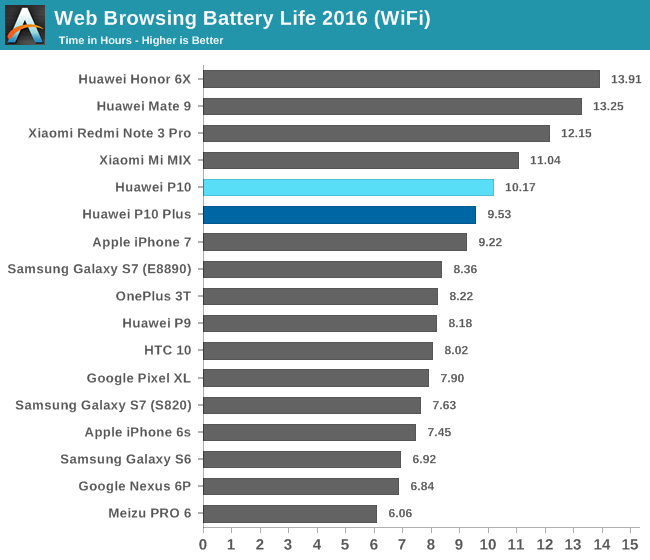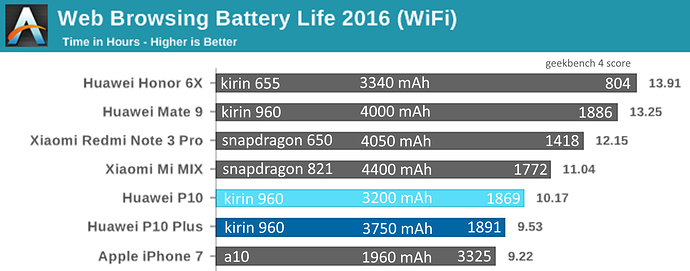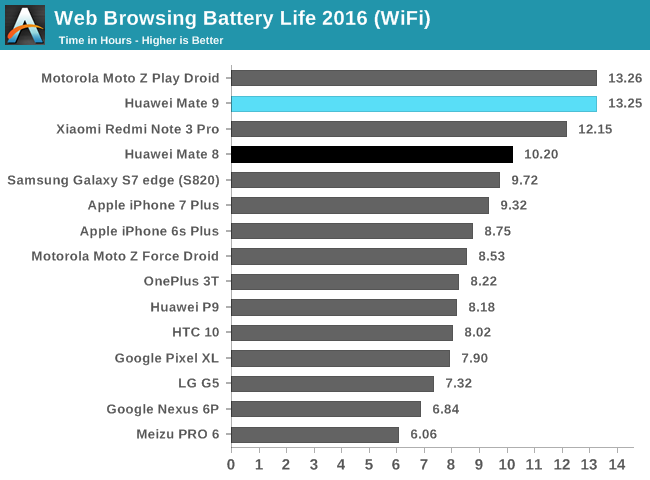Can spark import apple Mail DBs? Yeah, sorry, when I said “either” I meant spark and airmail.
I don’t think it does. I’ve only ever used it with IMAP or iCloud or Exchange accounts, which all keep things on the server, so it wasn’t a requirement for me. I’m not 100% sure it doesn’t have some kind of local import, it’s just not something I needed.
I use Airmail on iOS for personal mail and Outlook for work. Both are excellent.
I don’t get notifications for email, though, as I get hundreds of mails per day and would be immediately overwhelmed.
It doesn’t, though. Try turning on a laptop from 2010 and see what kind of battery life you get. Even with a brand new battery.
It’s unresolvable, since the difference between
- I use my phone to play a game and encode video every second of every day
and
- literally every other kind of usage
is just too vast.
Even “screen time” isn’t right, because what if I am reading a Kindle book? Tons of screen time, but effectively zero CPU use. Like I said earlier, I think the best baseline battery test is normal web browsing to live internet sites. That’s probably fairly representative of how most people use their phones … and a fine proxy for non-reading-app battery usage.
I would definitely look for reviews that show web browsing battery drain time, as actually measured… like AnandTech does for example:
(reading this chart, I don’t know the Huawei / Xiaomi line well, but I am guessing the ones at the top are giant phablets, with correspondingly giant space for battery due to the size of the device?)
they even do it over LTE as well

I’m just saying that literally no one I know only charges their phone once every three days, including folks with new iPhones.
That seems to be lower than average use.
Possibly. I’d still recommend regular visits to Control Panel, Battery and terminating anything there that misbehaves even a little with

All it takes is one or two battery bad apples to put your battery in the doghouse, too.
(reading this chart, I don’t know the Huawei / Xiaomi line well, but I am guessing the ones at the top are giant phablets, with correspondingly giant space for battery due to the size of the device?)
I don’t know the Huawei ones, but the Redmi getting 12 hours is regular sized 5.5 inch 625 phone. Probably would have got one but the they are missing T-Mobile band 12.
I don’t keep close track, but every other or every third day or so isn’t out of whack for me. I definitely don’t charge my phone every day. I am also a very heavy user of the phone in that I’m using it very regularly throughout the day and evening (just ask my wife). I don’t, however, game on it. Lots and lots of email, text messages (iMessage, mostly), and web browsing.
The Huawei Honor 6x is a standard sized 5.5" phone, it’s not a phablet and doesn’t have an oversized battery, it just gets phenomenally better battery life in terms of ~9hours SOT to my 3.5hours on my S5.

You came so close. Now, having recognized that there’s at least one common usage pattern that involves little CPU usage time, take the next step! Instead of arbitrarily excluding that usage because it doesn’t produce the result you want, ask yourself whether it might actually be closer to average real-world usage than opening and closing an endless sequence of to-do lists is.
The overwhelming majority of the time I use my phone, its job is simply displaying text and images. Whether that’s an ebook, a forum, an RSS reader, an email program, a news site, etc., all it needs to do is put existing content on the screen. Sure, every few minutes of reading, there’s a burst of CPU and network activity as it retrieves and renders the next thing I want to read, but that’s really the only time a killer CPU gets to stretch its legs.
If you were to pick a second at random from my usage, there’s probably around a 1/200 chance that that second would materially benefit from a faster processor (i.e. read an article for 3-4 minutes, then load the next for 1-2 seconds). How much effort should be put into optimizing for 0.5% of the time, and what tradeoffs are acceptable to do so? So perhaps you can finally grasp how faster performance can simultaneously be welcome, but not worth sacrificing other desired features for.
Even with a like feature enabled I’d probably quote this because its important. I’m not entirely sure what you would consider “live internet use” but to me that means browser time. I rarely use my browser on my phone. Reading, forums (Tapatalk), GPS (including some location lookup through Maps), and keeping in touch (text and email) are my phone’s reasons to exist. Games are a guilty pleasure battery waster at times but I doubt that two dots is straining the CPU.
Are Thraeg and I more representative or are you? I don’t know.
Now I’ve off to look at Chinese phones (although my early 2015 Z3C is still going strong and won’t be replaced for at least another year)
Let’s just drop this part of the conversation. It was based on my somewhat snarky answer to your wording.
Not quite… I went ahead and put the geekbench single threaded scores next to the browsing battery life so you guys can see that “slow cpu = moar battery” isn’t necessarily so…
From left to right: SoC, battery size in mAh, Geekbench 4.0 score, real world battery runtime.
Compare all the above the pretty damn bad score of 627 for the Snapdragon 615 in the Moto X Play. I wouldn’t even bother with this damn thing today, when you could get 3x the performance in the Snapdragon 650.
The Redmi Note 3 Pro uses the Snapdragon 650 and achieves a really competitive battery life result without giving up much perf. If that’s the case, you battery life focused peeps should definitely be looking at the Snapdragon 650 which at 1418 isn’t that far off the best Android device pace of 1900. You still seem to need a ~ 4000 mAh battery to achieve that, but…
An iPhone 7 with a 3200 mAh battery would DESTROY these Android battery life scores. I mean utterly fucking demolish them. 3200 / 1960 = 1.63 and 1.63 × 9.22 = 15.02. That’s right, just over fifteen hours of battery life. And all that, while being 2x-3x as fast. Sad!
Well, let’s see…
Documentation spotted from Chinese regulatory body TENAA reveals that the iPhone 7 has a 1,960 mAh battery, which is slightly bigger than the 1,715 mAh battery in the iPhone 6s. The iPhone 7 Plus has a 2,900 mAh battery, which is bigger than the iPhone 6s Plus’s 2,750 mAh battery as well.
Compare to the highest runtime Android devices in the above graph… 3340, 4000, 4050, 4400, 3200, 3750 vs… 2900.
(to be fair it’s not quite right because the plus does have a larger screen as well as a larger battery, so the runtime would be a bit less…)
It is stupidly hard to find sites that actually test smartphones instead of “reviewing” them like wines, with scents of almond and a chalky aftertaste. Here’s one that seems OK, I guess?
So 466 minutes for the iPhone 7, and 545 for the iPhone 7 plus. That’s 17% more runtime. Extrapolating from the previous AnandTech graph, that’d put the iPhone 7 plus at roughly the same level as the phone with the 4400 mAh (!) battery, just under 11 hours… with a measly 2900 mAh battery.
I dunno man, the case for the battery case is looking pretty damn good right about now. Pretty good. Pretty, pretty, prettttttyyyy prettyyyyyyyy good.
If a phone isn’t durable/grippy enough to survive dropping and being used without a case, so you’re going to be adding a big chunk of whatever, why not put the entire battery in the case?
Then you can buy a slightly thicker one for longer life. Way cleaner/lighter/thinner than the the terrible battery cases that exist now. Year old phone isn’t lasting as long as it used to? Buy a new case and you get a fresh 0-cycle battery.
I feel better about my Redmi Note 3 Pro now, which is built on a 28nm process but really does offer good performance and very good (but not 12 hour–that seems wildly optimistic) battery life. wumpus had me looking long and hard at the Oneplus 5 for a while there.
Unfortunately for performance-oriented folks, Xiaomi took a step BACK with the newest iterations of the Redmi Note and the Mi Max, both of which used to feature the 650 but now have been downgraded to the Snapdragon 625, instead of the logical successor, the SD 660. Battery life has improved but at the expense of single-threaded performance. Bleah.
why is the samsung galaxy s7 posting such shitty battery against the iphone at that website but posting slightly better against it in these: http://www.anandtech.com/show/10871/the-huawei-mate-9-review/9 and http://www.anandtech.com/show/10685/the-iphone-7-and-iphone-7-plus-review/5 ?
also, how do you post images?
Different methodologies I guess but I would favor AnandTech results as they
are quite thorough.
This is unexpected. The OnePlus 5, which has 8GB (!) RAM plus the same Snapdragon 835 as the Galaxy 8 … is finally able to go toe to toe on app load time with the iPhone 7+ measly 3GB RAM:
It looks like this guy may have changed the apps he used a bit since the last comparisons, so the times in my previous post can’t directly be… compared.

Still, keeping up with an iPhone 7:

Funny how the iOS animations are credited with slowing things down, as well. I always have mine on reduced motion.





